Abstract
The gated RapidArc may produce a dosimetric error due to the stop-and-go motion of heavy gantry which can misalign the gantry restart position and reduce the accuracy of important factors in RapidArc delivery such as MLC movement and gantry speed. In this study, the effect of stop-and-go motion in gated RapidArc was analyzed with varying gating window time, which determines the total number of stop-and-go motions. Total 10 RapidArc plans for treatment of liver cancer were prepared. The RPM gating system and the moving phantom were used to set up the accurate gating window time. Two different delivery quality assurance (DQA) plans were created for each RapidArc plan. One is the portal dosimetry plan and the other is MapCHECK2 plan. The respiratory cycle was set to 4 sec and DQA plans were delivered with three different gating conditions: no gating, 1-sec gating window, and 2-sec gating window. The error between calculated dose and measured dose was evaluated based on the pass rate calculated using the gamma evaluation method with 3%/3 mm criteria. The average pass rates in the portal dosimetry plans were 98.72±0.82%, 94.91±1.64%, and 98.23±0.97% for no gating, 1-sec gating, and 2-sec gating, respectively. The average pass rates in MapCHECK2 plans were 97.80±0.91%, 95.38±1.31%, and 97.50±0.96% for no gating, 1-sec gating, and 2-sec gating, respectively. We verified that the dosimetric accuracy of gated RapidArc increases as gating window time increases and efforts should be made to increase gating window time during the RapidArc treatment process.
Go to : 
References
1. Ahmed RS, Shen S, Ove R, Duan J, Fiveash JB, Russo SM. Intensity modulated with respiratory gating for radiotherapy of the pleural space. Med Dosim. 32(1):16–22. 2007.
2. van der Geld YG, van Triest B, Verbakel WF, et al. Evaluation of four-dimensional computed tomography-based intensitymodulated and respiratory-gated radiotherapy techniques for pancreatic carcinoma. Int J Radiat Oncol Biol Phys. 72(4):1215–20. 2008.

3. Chen H, Wu A, Brandner ED, et al. Dosimetric evaluations of the interplay effect in respiratory-gated intensitymodulated radiation therapy. Med Phys. 36(3):893–903. 2009.

4. Cheong KH, Kang SK, Lee M, et al. Evaluation of delivered monitor unit accuracy of gated step-and-shoot IMRT using a two-dimensional detector array. Med Phys. 37(3):1146–51. 2010.

5. Ling CC, Zhang P, Archambault Y, Bocanek J, Tang G, Losasso T. Commissioning and quality assurance of RapidArc radiotherapy delivery system. Int J Radiat Oncol Biol Phys. 72(2):575–81. 2008.

6. Nicoloni G, Vanetti E, Clivio A, Fogliata A, Cozzi L. Pre-clinical evaluation of respiratory-gated delivery of volumetric modulated arc therapy with RapidArc. Phys Med Biol. 55(12):N347–57. 2010.
7. Van Esch A, Huyskens DP, Behrens CF, et al. Implementing RapidArc into clinical routine: a comprehensive program from machine QA to TPS validation and patient QA. Med Phys. 38(9):5146–66. 2011.

8. Choi K, Xing L, Koong A, Li R. First study of on-treatment volumetric imaging during respiratory gated VMAT. Med Phys. 40(4):040701. 2013.

9. Coleman A, Skourou C. Sensitivity of volumetric modulated arc therapy patient specific QA results to multileaf collimator errors and correlation to dose volume histogram based metrics. Med Phys. 40(11):111715. 2013.

10. Riley C, Yang Y, Li T, Zhang Y, Heron DE, Huq MS. Dosimetric evaluation of the interplay effect in respiratory-gated RapidArc radiation therapy. Med Phys. 41(1):011715. 2014.

11. Ong C, Verbakel WF, Cuijpers JP, Slotman BJ, Senan S. Dosimetric impact of interplay effect on RapidArc lung stereotactic treatment delivery. Int J Radiat Oncol Biol Phys. 79(1):305–11. 2011.

Go to : 
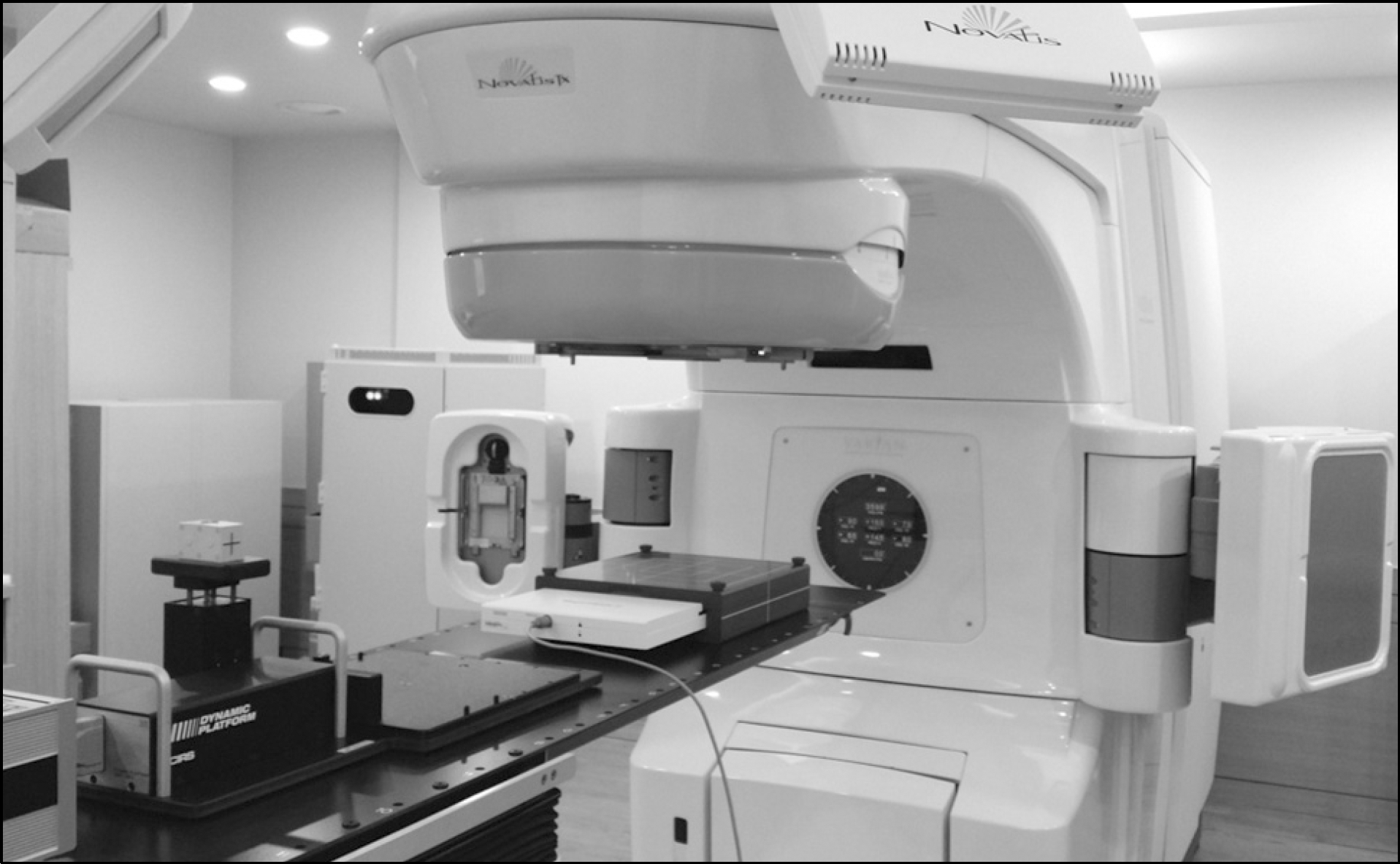 | Fig. 1.System for the DQA process with the MapCHECK2 measurement and the dynamic moving phantom for the accurate control of gating window time. |
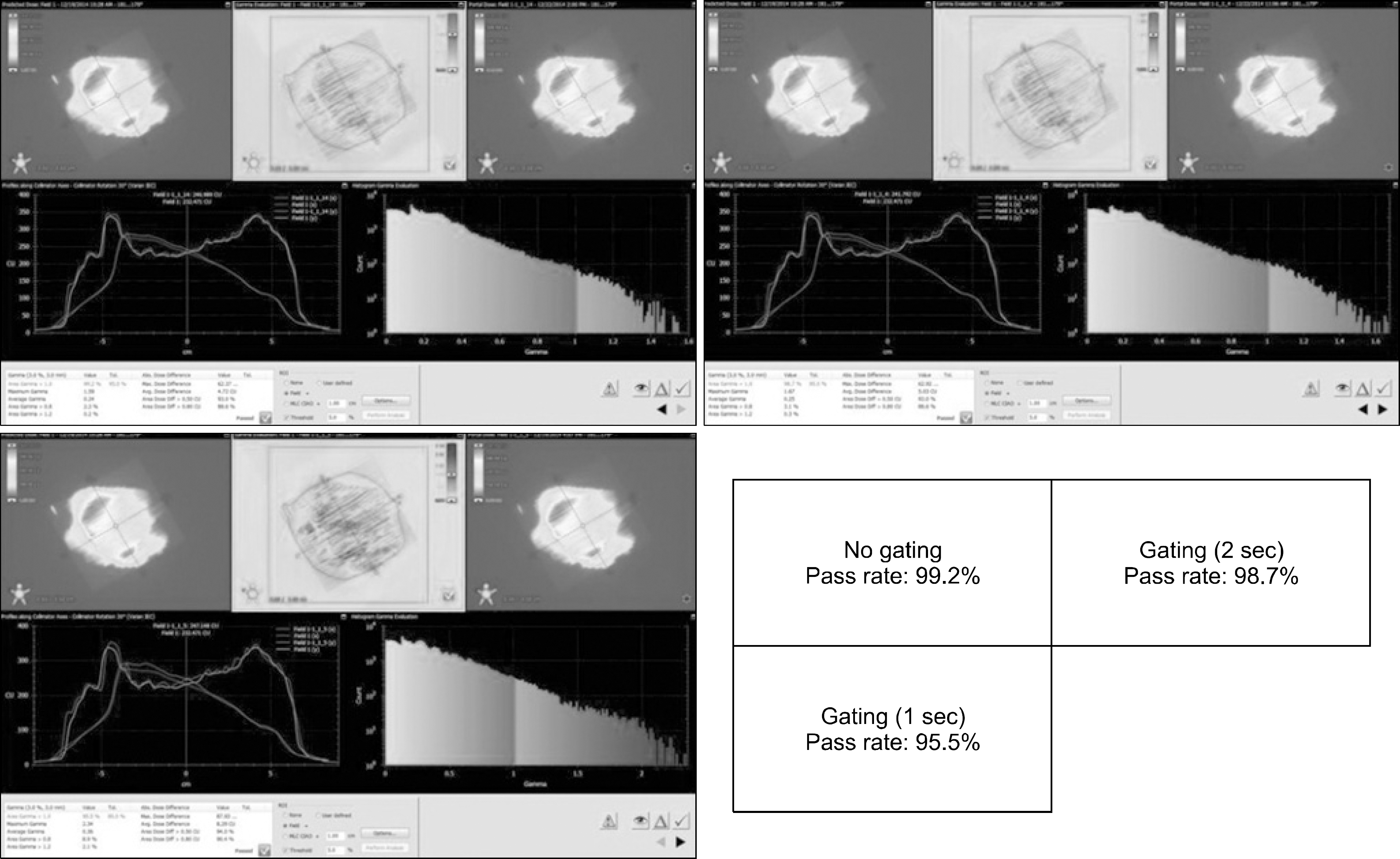 | Fig. 2.Example of the DQA analysis with portal dosimetry plan in three different gating cases. |
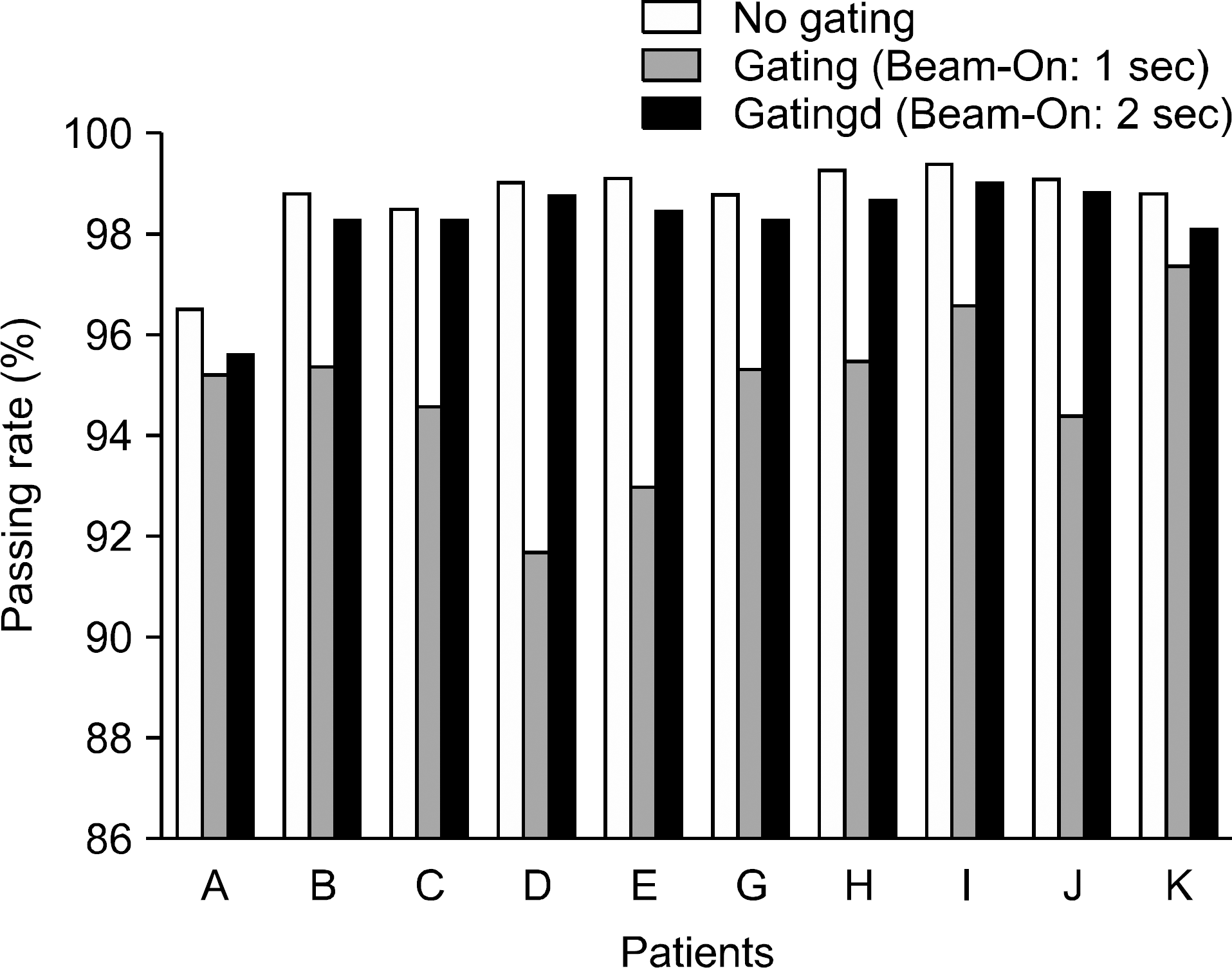 | Fig. 4.The comparison of DQA analysis results with portal dosimetry plan in three different gating cases. |
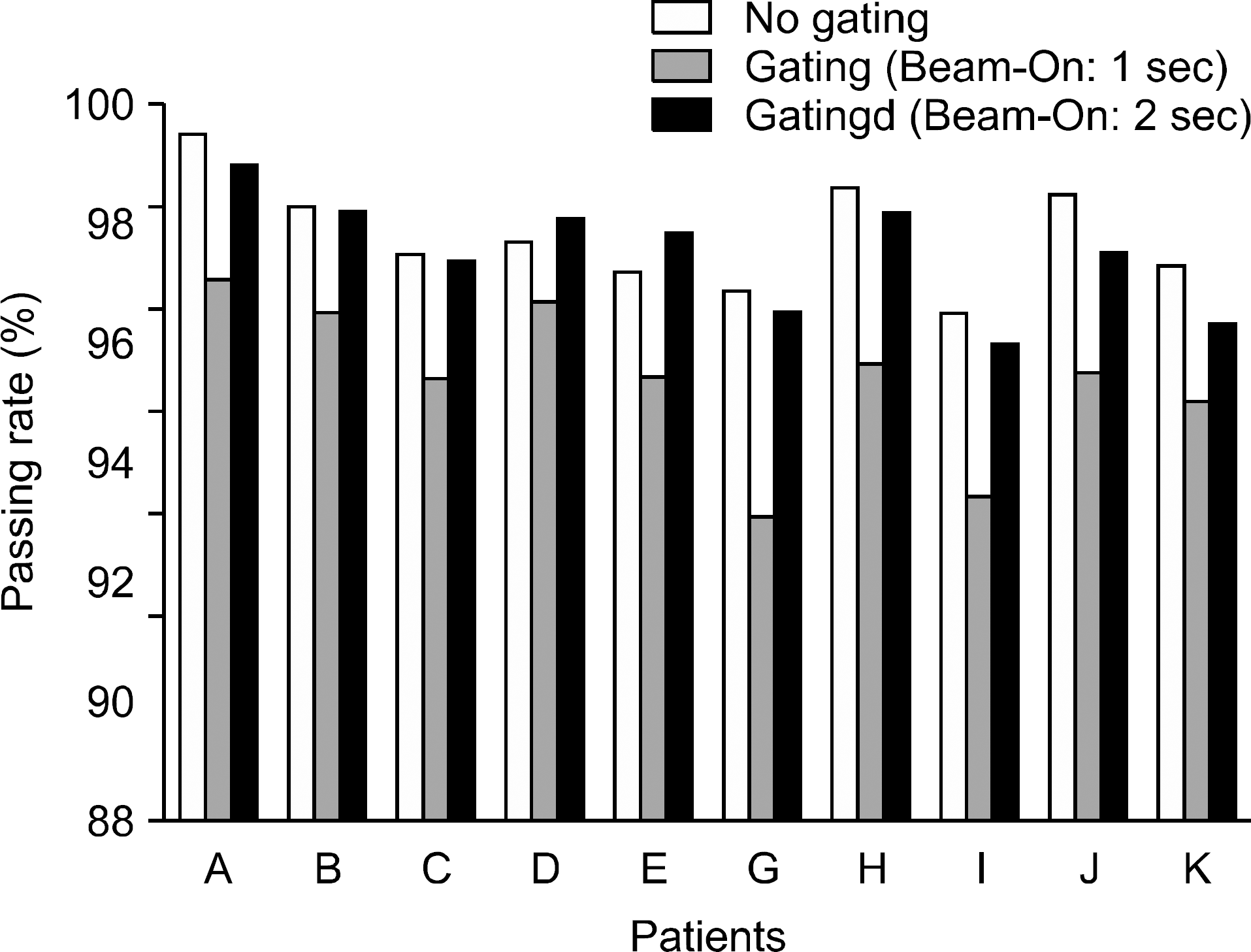 | Fig. 5.The comparison of DQA analysis results with MapCHECK2 plan in three different gating cases. |
Table 1.
The pass rates calculated using the gamma evaluation in the DQA process of gated RapidArc plans with a portal dosimetry and a MapCHECK2 measurement.




 PDF
PDF ePub
ePub Citation
Citation Print
Print


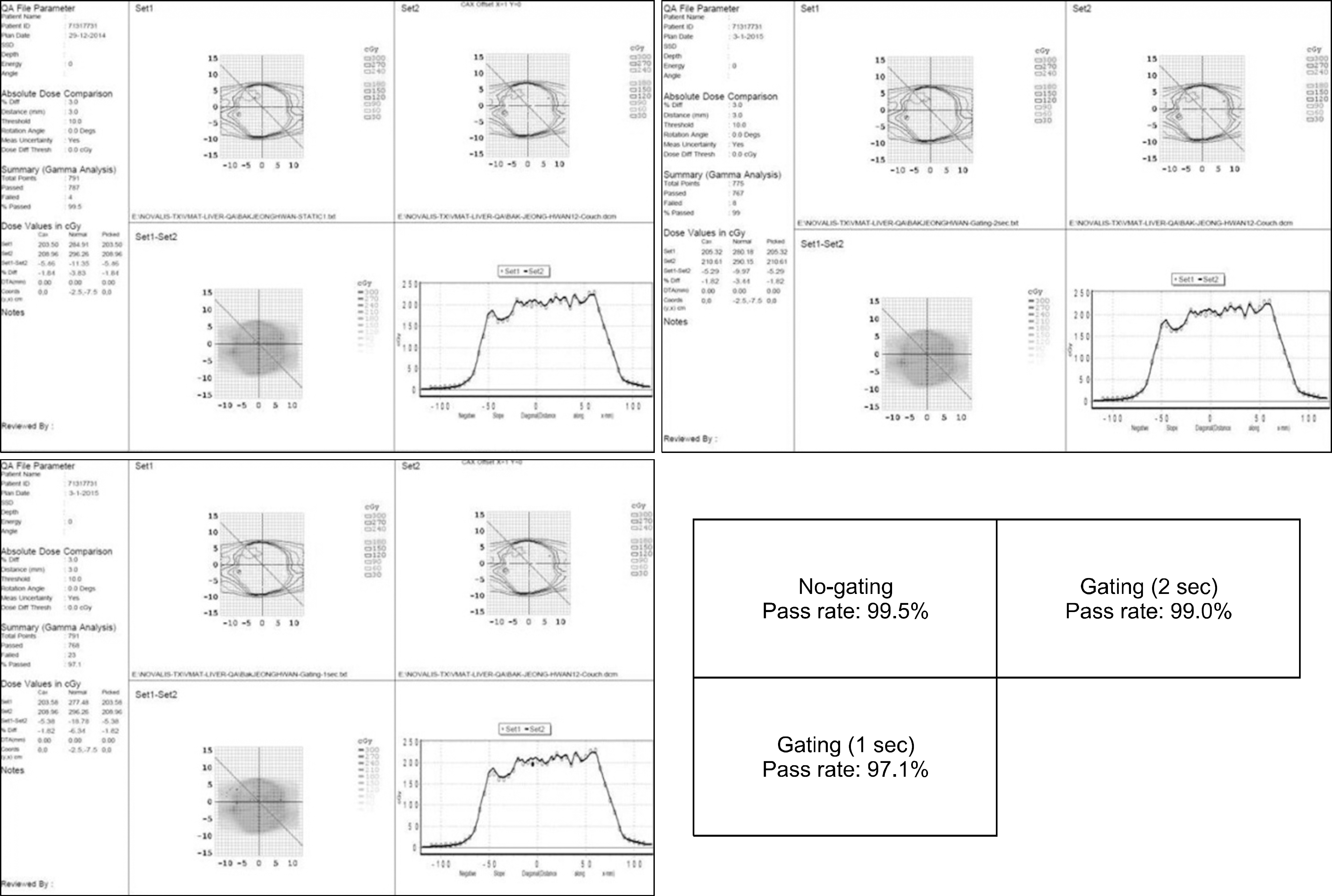
 XML Download
XML Download